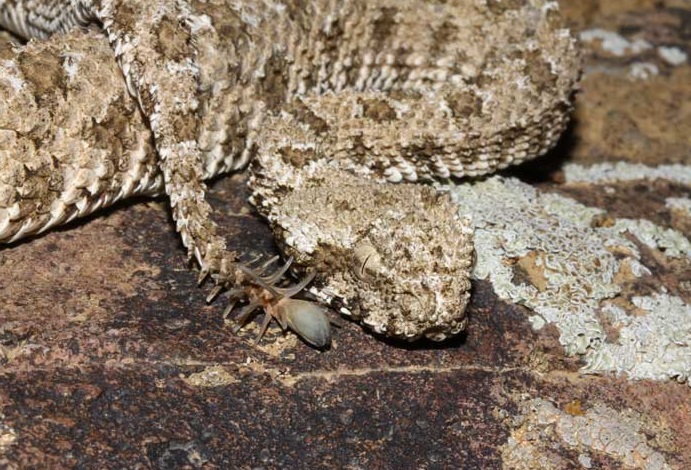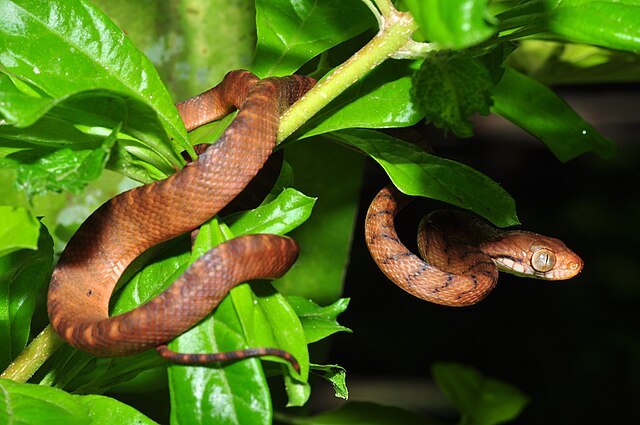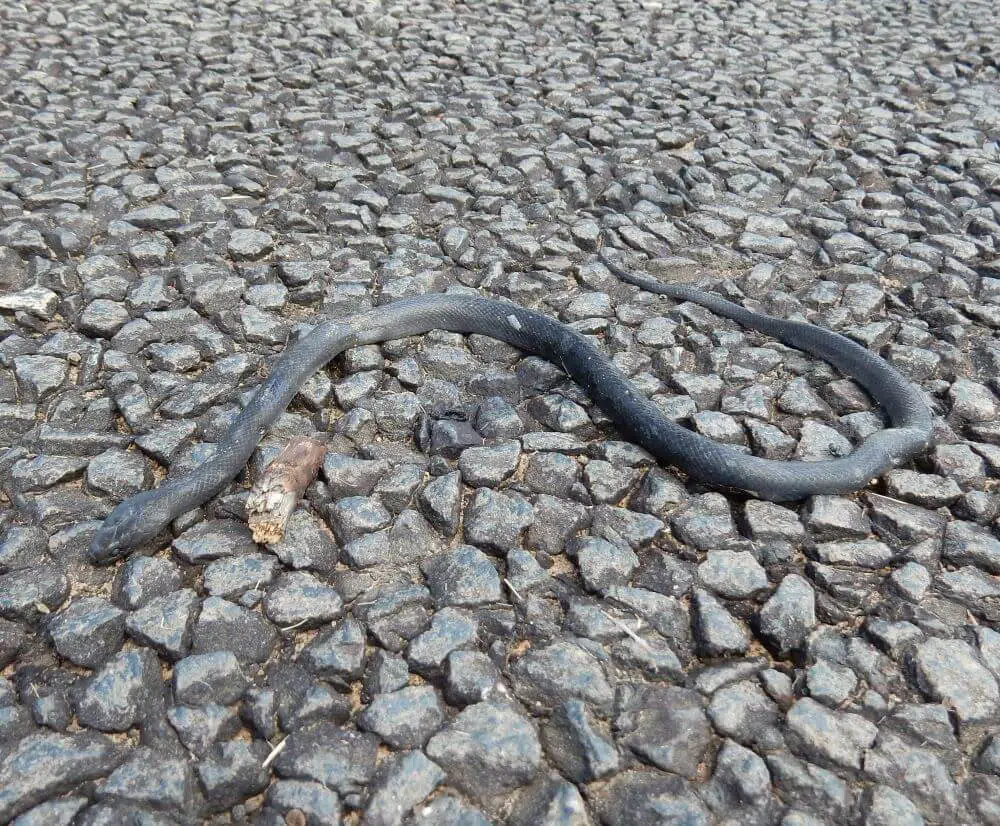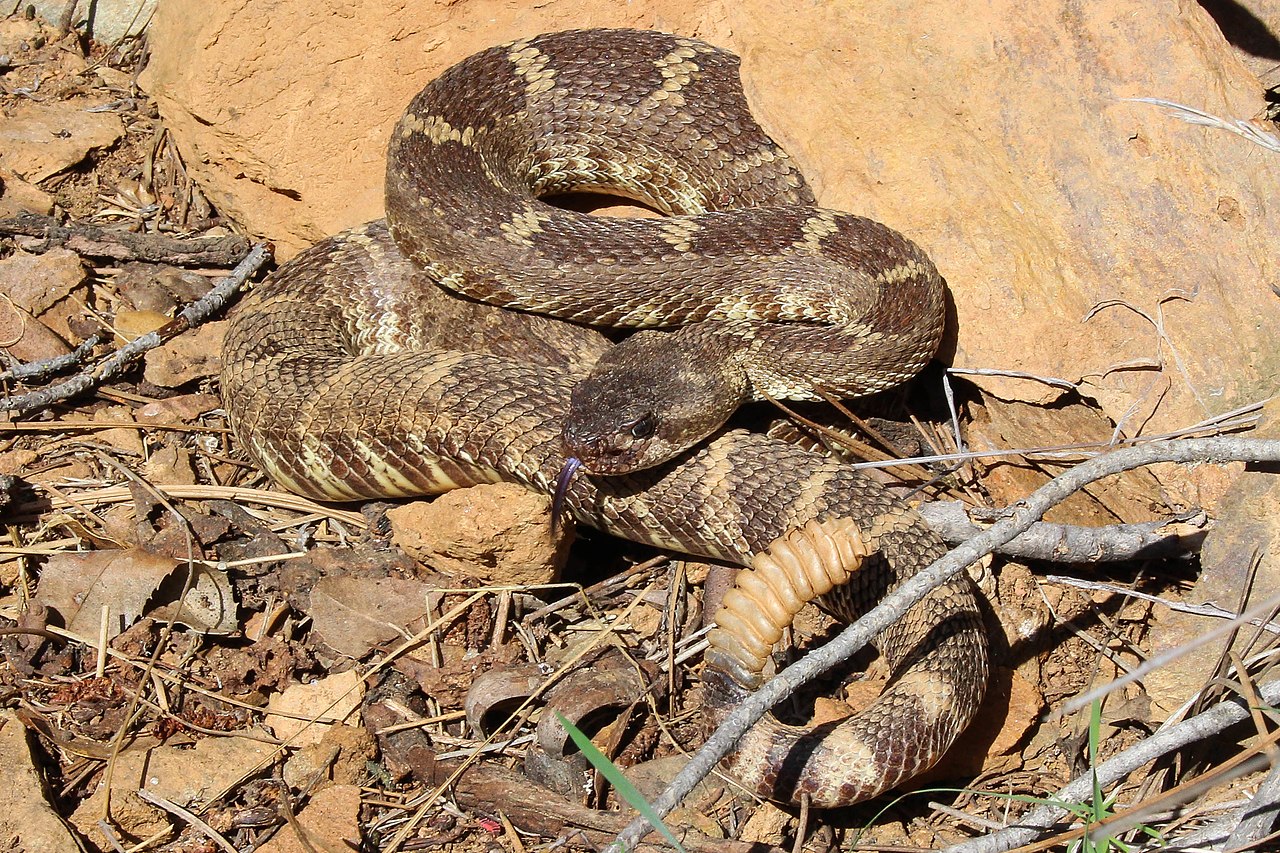In most cases, snakes should fear birds, such as eagles and owls. Many snakes are prey to bird predators. But what is interesting is that there are some snakes that eat birds. Continue reading to find out which snakes prey on birds.
Table of Contents
Do Snakes Eat Birds
Snakes are mostly carnivores, eating meals, including other snakes. There are those that hunt and those that lie in wait, ambushing their prey as it passes. Many snakes feed on small mammals from birds and their eggs to insects, rodents, lizards, and frogs.
Even though these snakes have teeth, they consume their food whole. The teeth are used to grab onto the prey, eliminating the risk of it escaping.
How Can Snakes Catch Birds
In the wild, the snakes will predominantly hunt small and young birds, that are still unable to fly. The majority of snakes that eat birds are tree-living.
Snakes like vipers can detect the heat coming from a bird. They can then creep up behind the bird and strike. They do tend to attack mostly baby birds, though they need to ensure they are not seen by the mother, who will peck the snake to death to protect her young.
The snakes that eat birds can detect the nest location, due to the noise of the chicks. While the mother leaves the nest to search for food, the snake strikes and eats the chicks.
Some snakes rely on ground-nesting birds to find chicks, while in populated areas, snakes are known to attack pets and livestock, such as chickens. Backyard farming attracts a number of snakes, some that will eat the chickens during the day or night.
12 Examples of Snakes That Eat Birds
The most common 12 examples of snakes that eat birds, includes:
1. Twig Snakes

Scientific name: genus Thelotornis.
Common name: twig snakes, bird snakes, vine snakes.
Twig snakes are also known as vine snakes or bird snakes. They belong to the rear-fanged family of venomous snakes, the Colubridae. They are native to Africa.
They are slender and long snakes with narrow heads and a pointed snout. It has a binocular vision through the horizontal pupil, which looks like a keyhole. These are grey to brown snakes with faint dark and lighter markings.
When threatened, they will inflate their throats and display black markings between their scales. Their venom is hemotoxic. This means their venom can impact the blood clotting mechanism, which results in uncontrolled bleeding and internal hemorrhaging.
Bites from this snake have caused human deaths in the past. Bites are rare, as the fangs cannot reach the skin, except in certain spaces, such as the webbing between your fingers and toes, for example.
They are one of a few rear-fanged colubrids, that has a bite that is potentially fatal. There is no anti-venom and a number of fatalities have been recorded to date. These snakes prey on lizards, frogs, and birds.
They hide in trees, low enough to strike at tree prey. They swallow upwards after killing. They have the ability to sway gently, camouflaging them into their environment and making them look like a twig.
2. Spider-tailed Horned Viper

Scientific name: Pseudocerastes urarachnoides.
Common name: spider-tailed horned viper.
Spider-tailed horned vipers are venomous snakes. These snakes are endemic to western Iran and were first described in 2006. These vipers have unique tails that have a bulb end with long scales, making them look like a spider.
This viper waves its tail around to lure birds hunting for insects. They strike once the bird is in range. Their body scales are rough.
3. Brown Tree Snake

Scientific name: Boiga irregularis.
Common name: brown tree snake, brown catsnake.
The brown tree snake is also known as a brown cat snake. This tree snake is native to coastal Australia and eastern Indonesia, Papua New Guinea, and islands in northwestern Melanesia.
The brown tree snake is seen as an invasive species that is a serious problem to native bird populations in Guam. These birds prey on birds, bats, rats, and lizards. They also prey on birds and shrews, threatening local birds and lizards in Guam.
The brown tree snake can grow to 2m in length, thanks to the wide range of prey in their habitats. These are nocturnal snakes, which have two grooved fangs at the back of their mouth, which makes it hard to bite and deliver venom to a human.
These are aggressive snakes and not considered dangerous to humans, though a bite is worth an urgent visit to the doctor, especially for children and elders.
4. Golden Lancehead

Scientific name: Bothrops insularis.
Common name: golden lancehead.
The golden lancehead is a venomous pit viper that is endemic to Sao Paulo in Brazil. This snake is a light brown/yellow color that can grow to 90cm. There are many blotches on the body.
Their belly is yellow or cream. Their heads are elongated with a pointed snout. The elongated head with a pointed snout is believed to help the viper move through trees and eat larger birds.
Due to this snake living in a very isolated habitat and the lack of mammal prey, their venom has evolved and adapted to their specific prey. Due to them living in an area that is uninhabited by humans, no reports of bites from this snake have been reported.
This snake’s diet comprises mostly of perching birds. Though they are known to eat lizards and other snakes. They are classified as critically endangered by the IUCN.
5. Bullsnake

Scientific name: Pituophis catenifer sayi.
Common name: bullsnake.
Bullsnakes are large non-venomous snakes, a subspecies of the gopher snake. They are one of the longest snakes in North America and can grow to eight feet in length.
They are yellow snakes with brown, black, white, and sometimes red patches. The pattern includes large patches on the top, three sets of spots on their sides, and banding on the tail in black. These are powerful constrictors that eat small mammals, including birds’ eggs and ground-nesting birds.
They are excellent climbers, enabling them to raid bird nests, eating the babies or the mother. They can eat up to five small birds within fifteen minutes.
6. Aesculapian Snake

Scientific name: Zamenis longissimus.
Common name: Aesculapian snake.
The Aesculapian snake is a non-venomous snake from Europe that can grow to six feet in length. They are dark, slender, and long snakes with a bronze coloration, smooth scales with a metallic sheen.
Juveniles have a yellow collar around their necks, which can carry on into young adulthood but will fade with age. Adults are uniform in color being brown/green, black, or olive/yellow. The adults have a pattern on their dorsal scales, which look like white freckles.
They have sharply angled vertical scales to help them climb. Their ideal habitat is warm forested areas, along with hilly or rocky habitats.
Their main food source is rodents, right up to the size of rats. They eat nesting birds and their eggs. They suffocate their prey through constriction.
7. Antiguan Racer

Scientific name: Alsophis antiguae.
Common name: Antiguan racer.
The Antiguan racer is a harmless rear-fanged snake, grey to brown in color. They can be found on the Great Bird Island near Antigua, in the Caribbean. They are one of the rarest snakes in the world.
In addition to the Great Bird Island, these snakes have successfully been introduced near Rabbit Island, York Island, and Green Island. These snakes can grow to around one meter in length with females being larger than the male. They are usually speckled and have patches in a range of colors.
These snakes originally come from Barbuda and Antigua and were found on the Great Bird Island in 1995. The small 8.4-hectare island offers shady woodlands, dense undergrowth, and some rocky outcrops and beaches.
These snakes have a gentle temperament and are harmless to humans. They hide in their shelter at night. They eat a varied diet from lizards to birds. These are ambush predators that hide under leaves until their prey is close enough to strike.
8. Burmese Python

Scientific name: Python bivittatus.
Common name: Burmese python.
The Burmese python is one of the largest snakes in the world, native to Southeastern Asia. It is listed as Vulnerable by the IUCN. These are dark, non-venomous snakes with brown patches bordered in black, running down their backs. They can grow to five meters in length.
They are often encountered near swamps and marshes and are known to be semi-aquatic. They are good climbers and can climb trees. As good swimmers, they need to be near a permanent water source. They can live in swamps, marshes, grasslands, woodlands, river valleys, and rocky foothills.
They are carnivorous and their diet mostly comprises birds and small mammals, along with some amphibians and reptiles. These site and wait predators spend their time staying still, waiting for unsuspecting prey to approach.
These snakes will grab their prey with their sharp teeth, wrapping their body around the prey and constricting around it to kill it. They then eat their prey whole.
9. Green Anaconda

Scientific name: Eunectes murinus.
Common name: giant anaconda, common anaconda, common water boa, sucuri.
The green anaconda is also known as the giant anaconda. It is common in South America. They are the heavier and longest snake species and are non-venomous constrictors.
Green anacondas are the heaviest and largest snakes, which can grow to seventeen feet in length. They can weigh up to seventy kilograms. Their coloration is olive green with black patches that run the length of the body.
They have a narrow head with orange/yellow stripes on the sides and their eyes are set high on the head. The eyes enable the snake to swim underwater without exposing its body.
These snakes prefer marshes, slow-moving streams, and swamps in tropical rainforests, such as the Amazon and Orinoco basins. They are sleek in the water, but rather cumbersome on land.
They are a nocturnal species that spend most of their time in or around the water. They are excellent swimmers and can swim at impressive speeds. When a prey stops to drink, the snake strikes, coiling its body around the prey and suffocating it.
10. King Cobra

Scientific name: Ophiophagus hannah.
Common name: king cobra.
The king cobra is a venomous snake that is endemic to the jungles in southern and southeast Asia. They are large with a distinct neck pattern. They are the largest venomous snake in the world.
The king cobra can grow to thirteen feet in length with varying colors from black with white stripes to uniform grey/brown. Their diet comprises other snakes, along with their own species, birds, rodents, and lizards.
When disturbed or threatened, they will spread their neck flat and raise their head upright, puffing and hissing. They do avoid human confrontation where possible, though they will strike if provoked.
The male king cobra is significantly larger and lighter in color than the females. They have a large and bulky head and can expand their jaw, enabling them to eat their prey whole.
11. Olive House Snake

Scientific name: Lycodonomorphus inornatus.
Common name: olive house snake, black house snake, olive ground snake.
The olive house snake or black house snake is a non-venomous snake, endemic to Southern Africa. This nocturnal snake can grow to seventy-five centimeters in length.
They can range in color from black to dark olive, uniform brown to olive/gray. Their belly, chin, throat, and neck are lighter. They are common in South Africa and Swaziland. They live in the bush veld and fynbos, where there is sufficient moisture.
These are slow-moving snakes and are common visitors to houses, where they hunt for birds, lizards, rodents, and other snakes. They are excellent climbers and will go into trees to find prey.
12. Northern Pacific Rattlesnake

Scientific name: Crotalus oreganus.
Common name: northern Pacific rattlesnake.
The Northern Pacific rattlesnake is a venomous pit viper. They can be found in western North America and can grow to a large size. On the mainland, they can reach one hundred centimeters in length.
As juveniles, they have less distinct patterns with their color matching the ground color. As adults, they are a dark brown, olive/brown, dark gray, or sometimes a yellow color with dark patches and uneven white edges.
They have a pale-yellow belly with brown spots and a dark brown patch on the snout. These pit vipers rely on heat sensors to locate their prey. Their diet consists of birds, birds eggs, and small rabbits.
Further Reading: